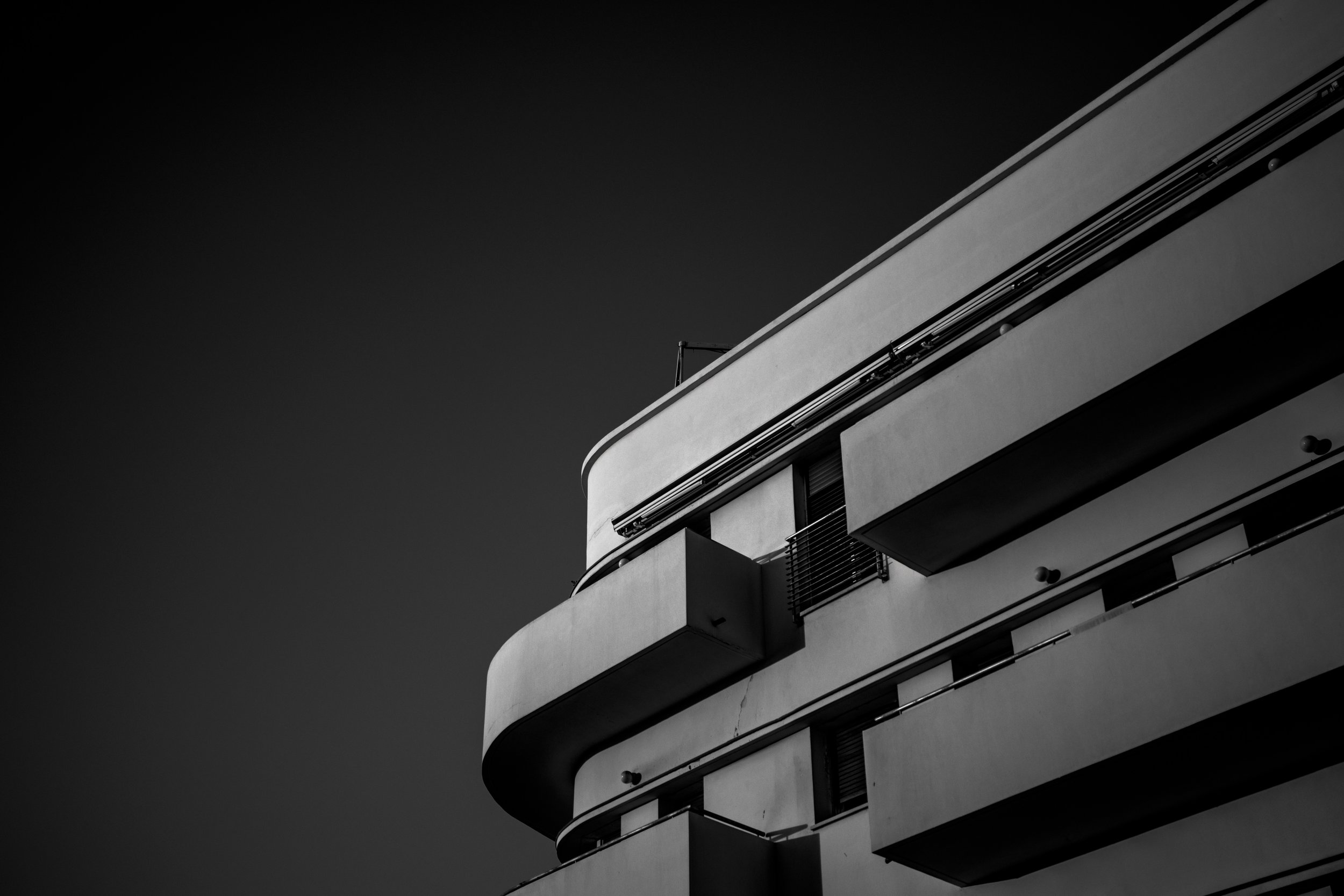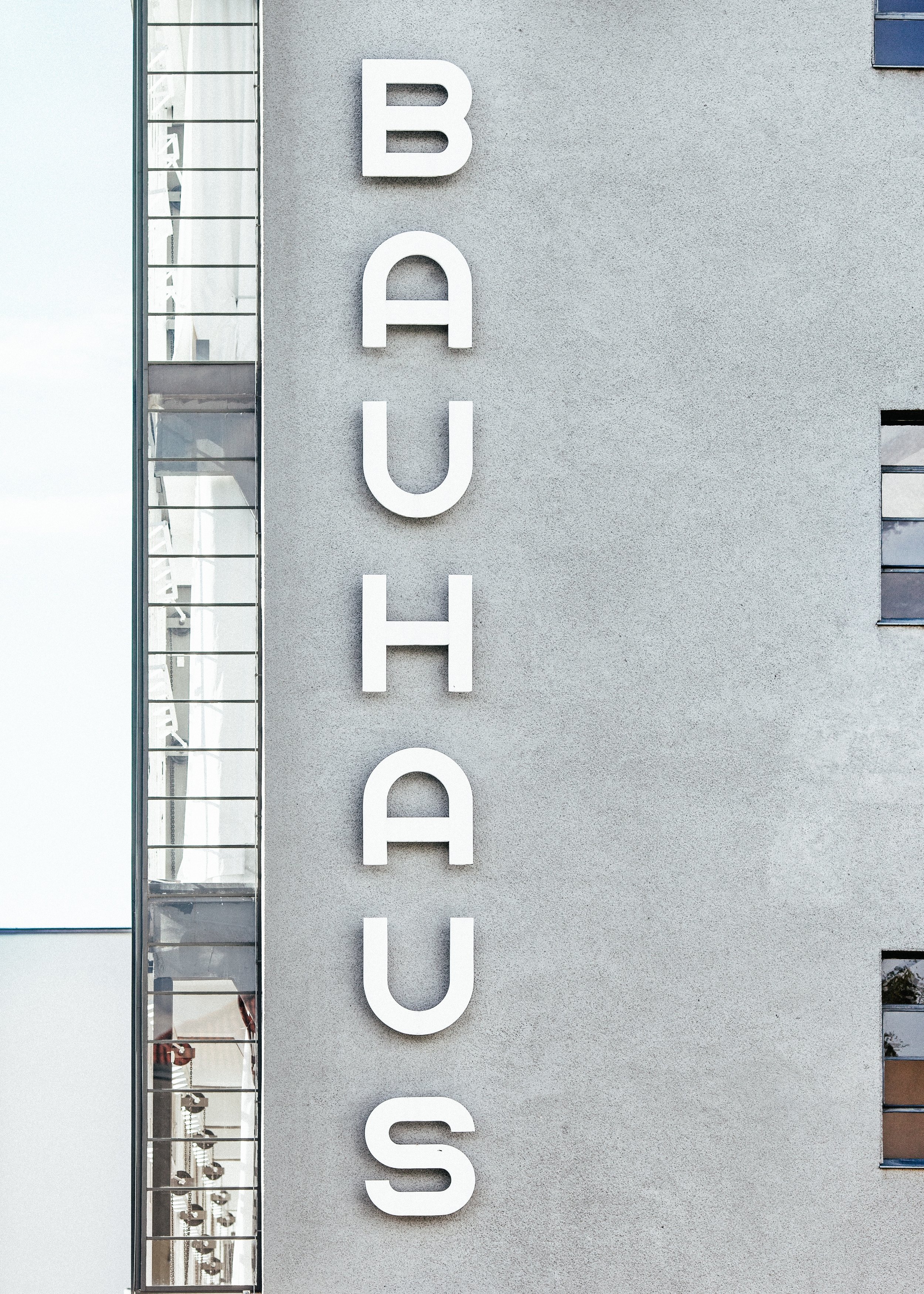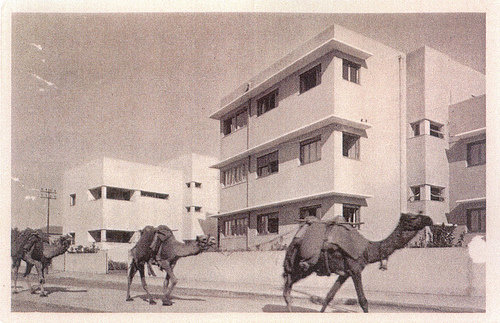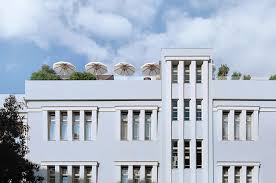At the center of a city that is fifteen times smaller than New York, you will find one of Tel Aviv’s coolest and trendiest districts, with streets lined with cafes, restaurants, and boutiques.
Known as ‘The White City’ (a nod to the color of the architecture), this area is home to a collection of buildings whose construction reflects modernism with the architecture and innovative town-planning ideas of the early 20th century, with roots that originated in Germany. Simply known as Bauhaus (translated as ‘architecture-house’), or the International Style (the reference for the American form), this major architectural style developed in the 1920s and 30s and had a significant impact on art and architecture trends in Western Europe, the United States, Canada and Israel.

Founded in Germany in 1919 just after World War One by architect Walter Gropius, the Bauhaus School was the most influential modernist art school of the 20th century and encompassed the totality of all artistic expressions: fine art, interior design, graphic design, typography, product design and architecture. Its belief was that form follows function, with an emphasis on the productivity of design coupled with a balance of form and color- which is beautiful but inexpensive. This later became one of the most influential principles in modern design and architecture.

As a result of the rise to power of the Nazi party in Germany in 1933, the Bauhaus school was eventually closed and many of its students fled to Israel. Four Israeli architects who studied in the Bauhaus school— Arieh Sharon, Shmuel Mestechkin, Munio Gitai-Weinraub and Shlomo Bernstein- brought this style with them when they immigrated to Israel, which they then implemented for the local culture and climate when building up the city. As there was no entrenched architectural style in Tel Aviv at this time, and there was a need to build quickly and economically, this new construction found the perfect home. With the desire to recreate the cafe culture of Europe in the hot climate of Israel- whilst integrating the modernist architectural style they had practiced- the group created a new architectural language.
Among other designers during this time, these architects made significant contributions to the development of Tel Aviv and the country at large. Arieh Sharon was known for his cooperative workers’ dwellings, private homes, cinemas, as well as the country’s hospitals and medical centers. Averbuch won second prize in 1934 to design Dizengoff Circle, in memory of Zina Dizengoff (the wife of Tel Aviv’s first mayor Meir Dizengoff), and Mendelsohn designed the private residence of the country’s first president, Dr. Chaim Weizmann.

The influence of Bauhaus on the architecture in Israel in the 20’s, 30’s and 40’s was also utilized by other architects who studied in Brussels, Ghent and Italy, such as Dov Carmi, Genia Averbuch, Ben-Ami Shulman, Ze’ev Rechter and Joseph Neufeld. Aside for those in Tel Aviv, thousands more Bauhaus style buildings were built in Haifa, Jerusalem, the Kibbutzim (communal settlements) and elsewhere in Israel.
The traditional Bauhaus style is characterized by asymmetry, cubic and rounded lines, ribbon windows (a series of windows set side by side), thermometer (vertical) windows, glass walls, balconies, roof terraces, and plays of shadow and light.
Bauhaus buildings in Tel Aviv were carefully planned and positioned to consider the culture and climate of the city, and therefore large windows were replaced with small recessed windows to limit the heat and glare in the hot Tel Aviv climate. Made of concrete and steel- and painted white to reflect the middle eastern heat- buildings include stilt columns (known as pilotis) which elevate a building off the ground for a garden area, and to allow for better airflow. Each apartment has its own balcony which is shaded by the one above it, and roofs are characteristically flat to accommodate residents for socializing on cool evenings. Functional clean lines and undecorated surfaces are also key characteristics of Bauhaus style; features which have since become trademarks of Tel Aviv construction.
In 2000, Dr. Asher Ben-Shmuel, Shlomit Gross and Dr. Micha Gross established the Bauhaus Center in Tel Aviv, dedicated to expand public recognition of the architectural and cultural heritage. The center hosts a library, shop and gallery, and has both permanent and changing exhibitions which showcase the Bauhaus impact on Tel Aviv. Guided tours are also available, which offer an excellent opportunity for tourists and history enthusiasts to explore the city’s gems.
Today, there are 4,000 Bauhaus style buildings in the center of Tel Aviv, more than in any other city in the world. In 2003, the United Nations Educational, Scientific and Cultural Organization (UNESCO) proclaimed Tel Aviv’s White City a World Cultural Heritage site, as “an outstanding example of new town planning and architecture in the early 20th century.”
While some of the Bauhaus buildings in Tel Aviv have been neglected and demolished, many others have been refurbished, and at least 1500 are slated for restoration. In 2015 the German government and the city of Tel Aviv entered into an agreement under which Germany would contribute 2.8 million euros ($3.2 million) towards the preservation project over a ten-year period. If you stroll through Tel Aviv today, you will see many original Bauhaus residential and office buildings that have been preserved and extended in recent years.
In a world that is quickly changing and evolving, we must make a concerted effort to hold on to our heritage. History is rich with meaning, and its messages serve as an invaluable guide for our present and future. As one of the fastest developing cities in the world, Tel Aviv is lucky to be home to a unique historical enclave that will forever have a story to tell, and impact generations to come.
You may also like
-
Artist Spotlight: Moriah Jewelry
-
Artist Spotlight: Dalia Ali
-
Prima Ballerina Svetlana Zakharova Brings the Beauty and Grace of the Bolshoi Ballet to Abu Dhabi Classics 2020
-
Marilyn Monroe, Elvis and Kate Moss art dazzles in new Harrods windows
-
10 Things You Didn’t Know About “The Phantom of the Opera”

